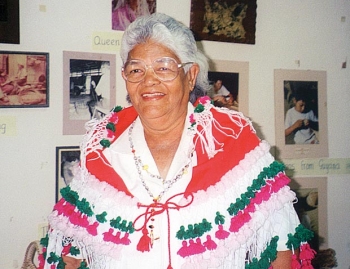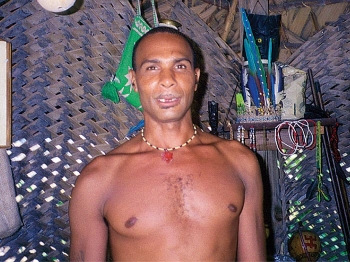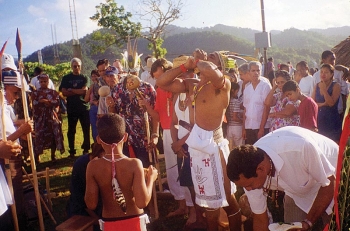
By Bernhard Grdseloff
Valentina Medina is the fifth woman to head the Carib community since female rule was introduced in 1875. "Each predecessor nominates her successor, who is then affirmed by the Council of Elders and thereupon declared Queen for life," the monarch explains. "I consider myself as a moral role model, I offer help and advice to memebers of the tribe who are in trouble, and I make sure our traditions are kept up."
Each year in August Trinidad’s Caribs celebrate their biggest festival: the Santa Rosa de Arima Festival in honour of their patron saint. Taking care of the festivity preparations is one of the Queen’s important tasks.
Although it’s a church festival, shaman Adonis performs a smoke ceremony dedicated to the ancestors at the beginning of the festivities."Our old beliefs lived on throughout the times and we always had medicine men who passed on their knowledge," says Adonis.
"It’s just that I’m the first not to perform our traditional healing methods and honouring of the Great Spirit at home and in secret", he adds. "Up to now we were afraid of being labelled cannibals!"
For a whole century, the martial Caribs defended their island until the Spanish managed to establish a first colony on Trinidad. The island’s initial 40,000 Carib Indians were continually diminished and finally cramped together on a space of 2500 acres around Arima where a Catholic mission took care of them. The missionaries christened the Caribs with Spanish names and made Spanish their main language.The English, who followed as colonial rulers, closed the door to the mission and took away the Caribs’ reservation. Instead they exiled Caribs from other islands to Trinidad.Up to the present day, the remaining 400 members of the community still live in Arima, keeping up Spanish traditions such as Parang music. Yet recently the indigenous people have become proudly aware of their origins and are getting in touch with Amerindians living on other islands and in Guyana.














